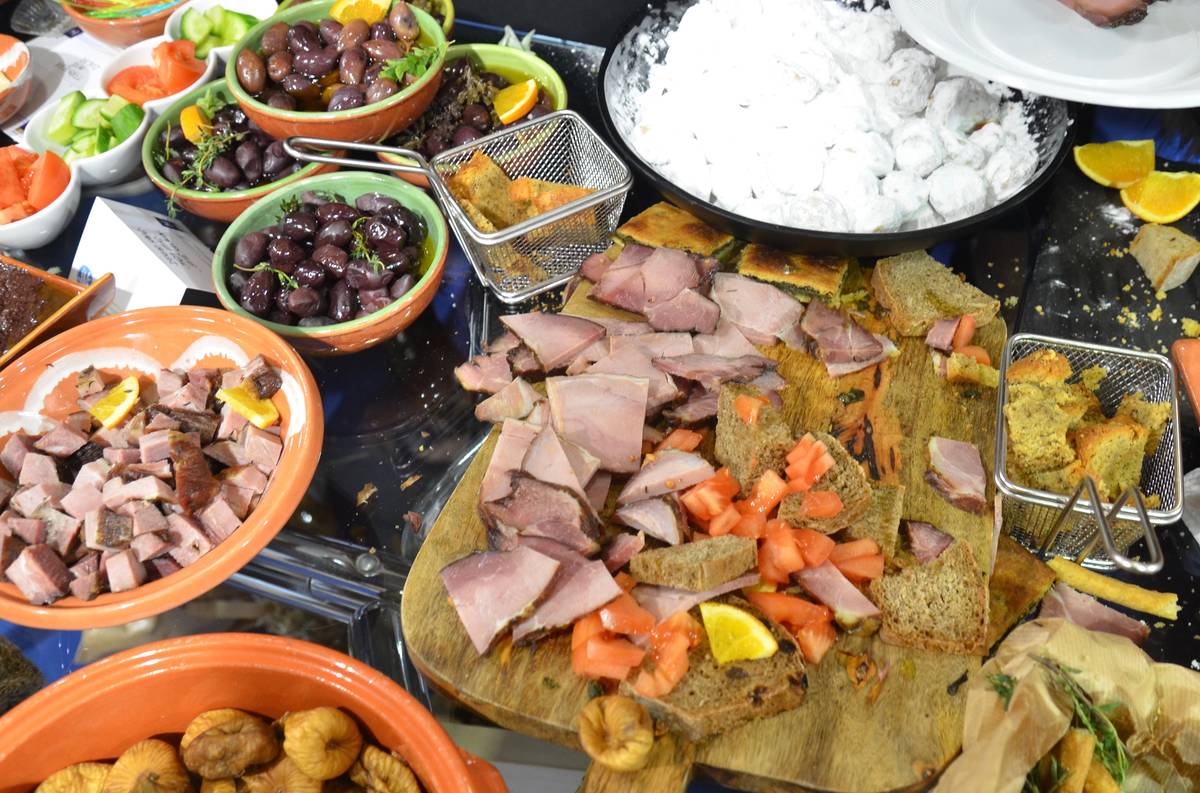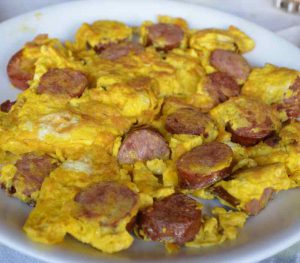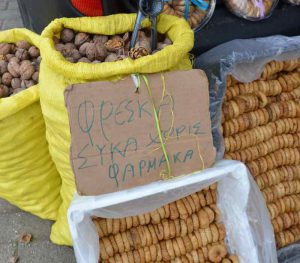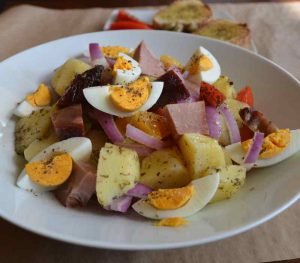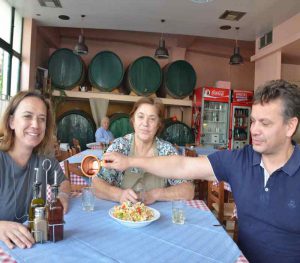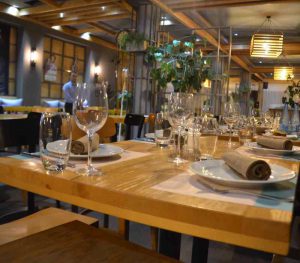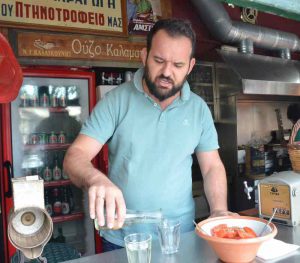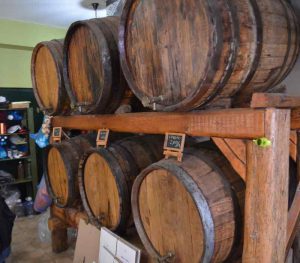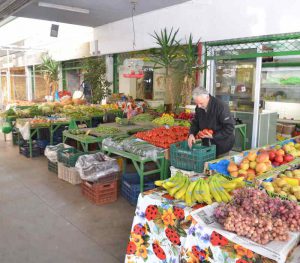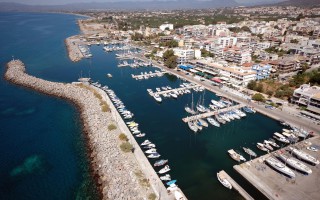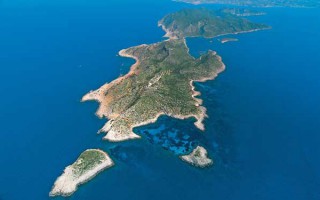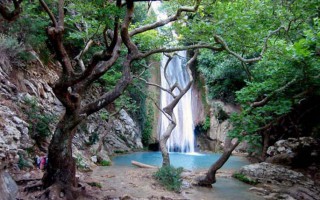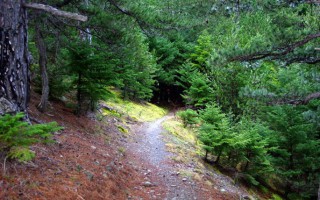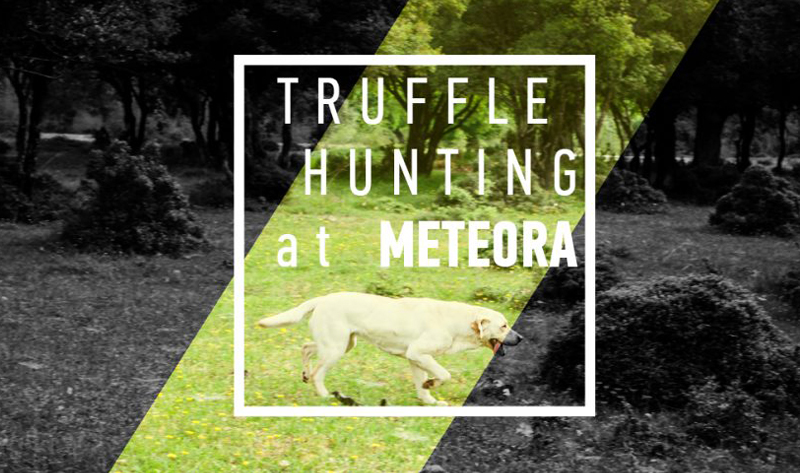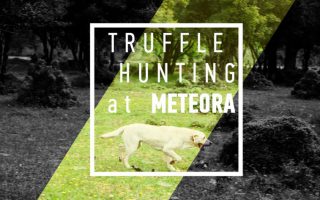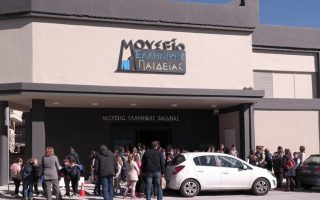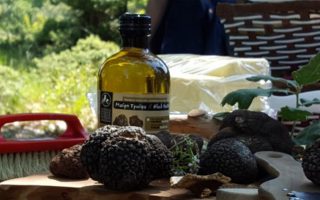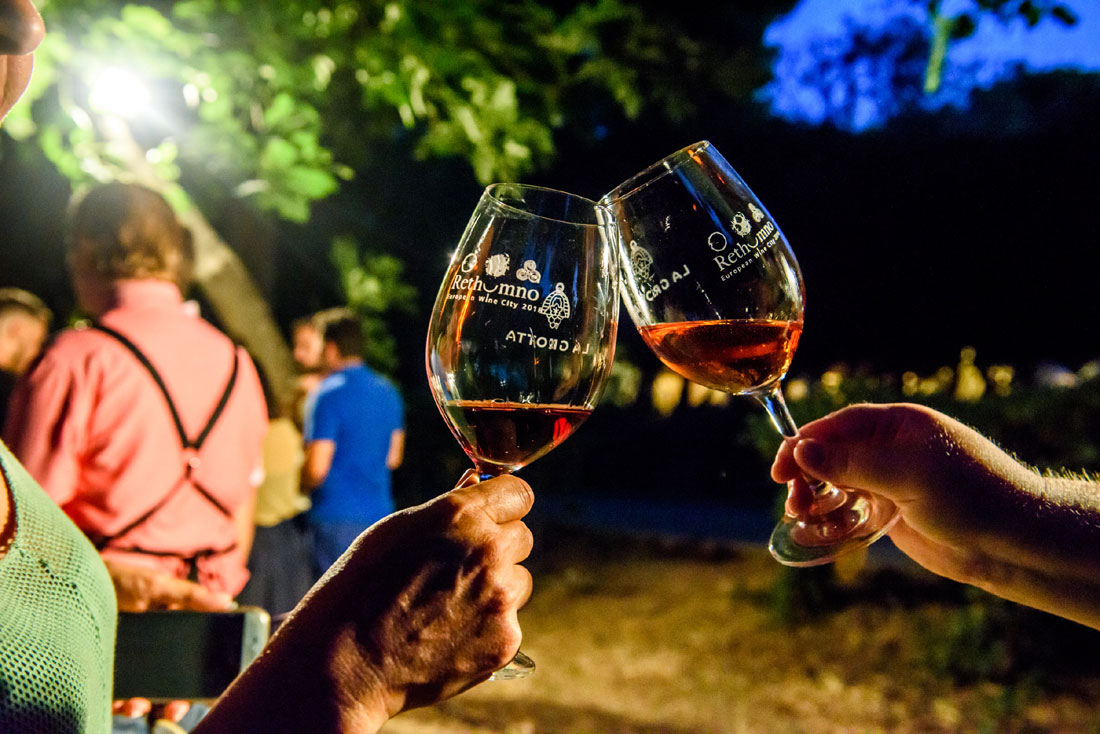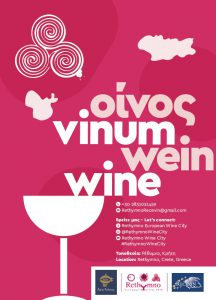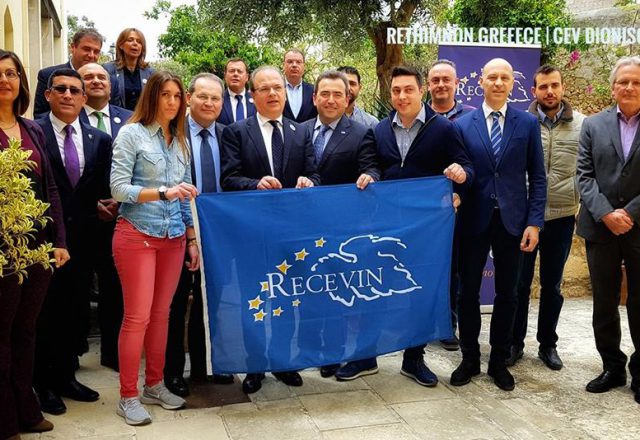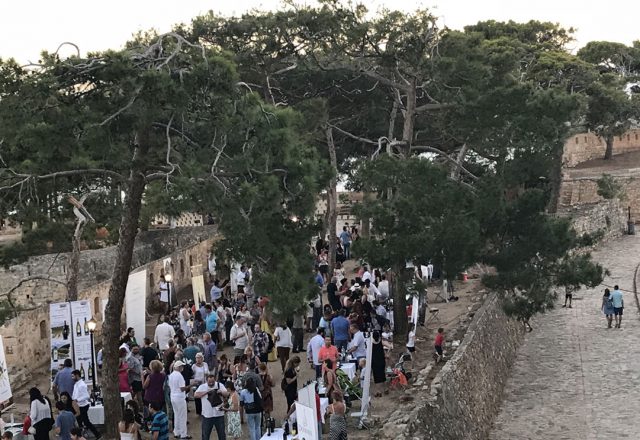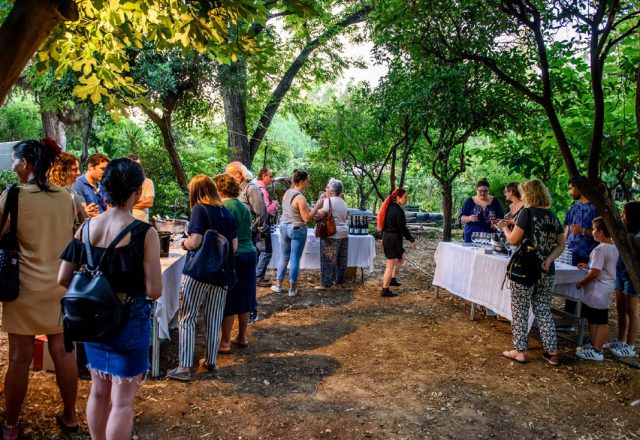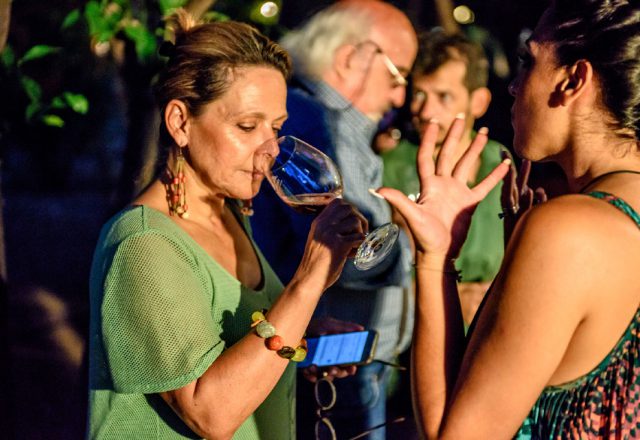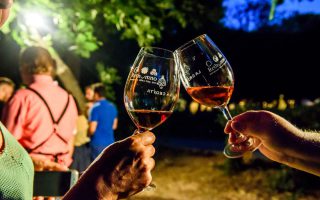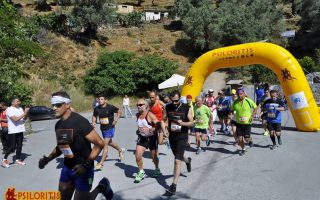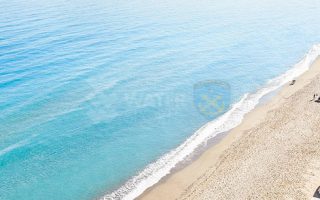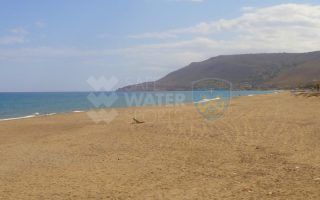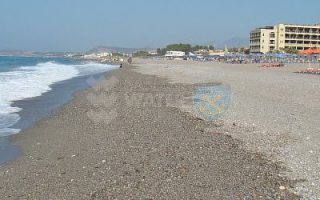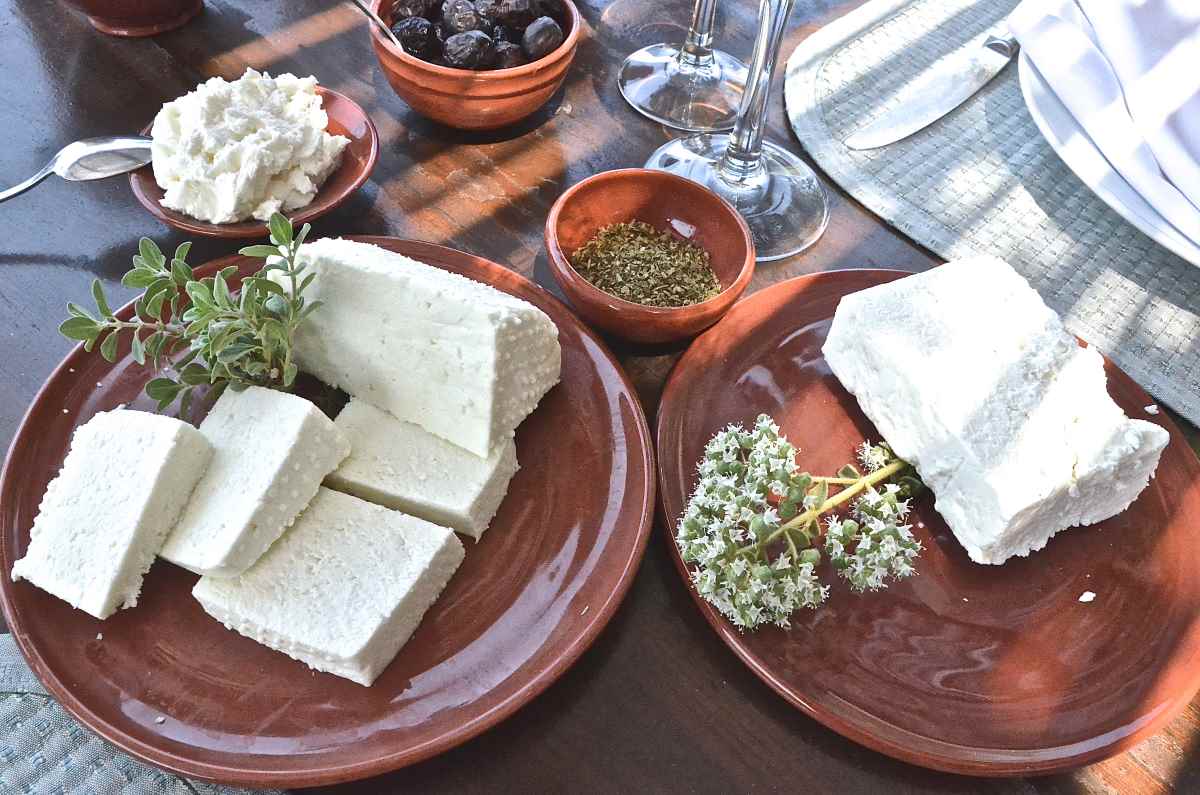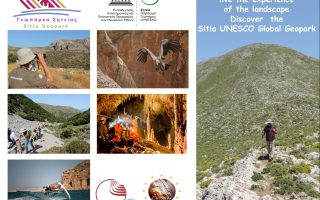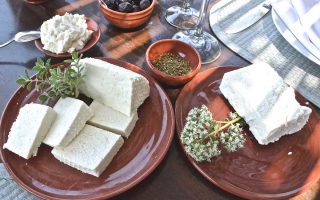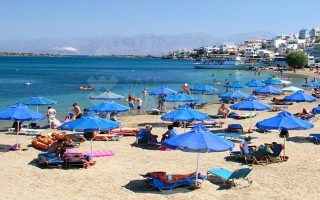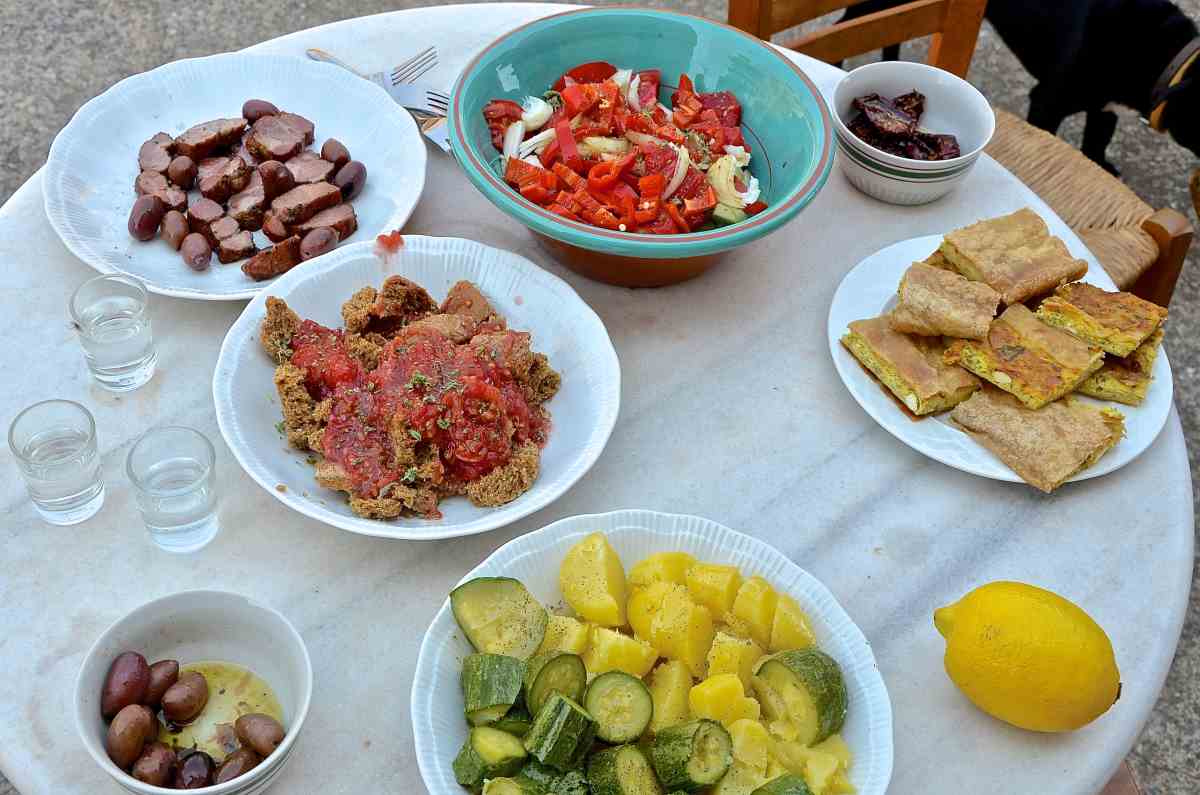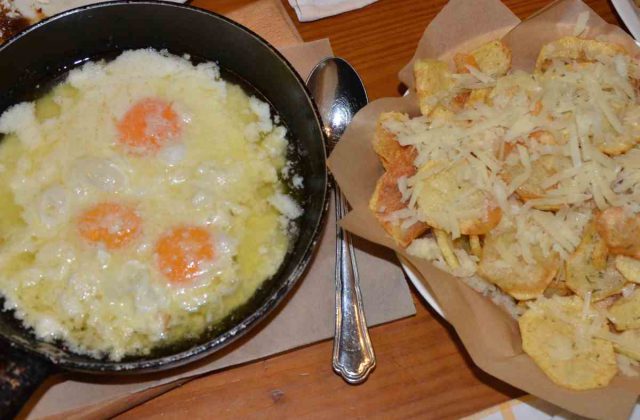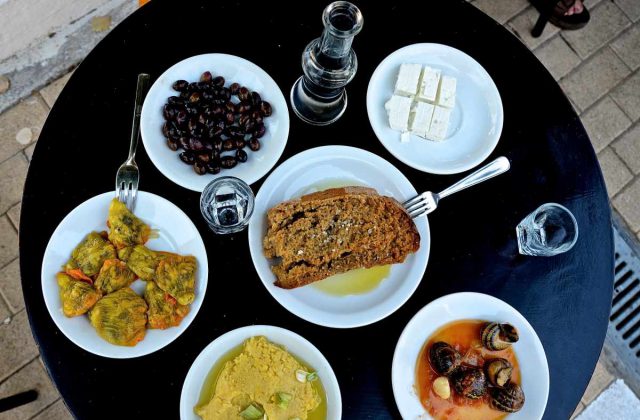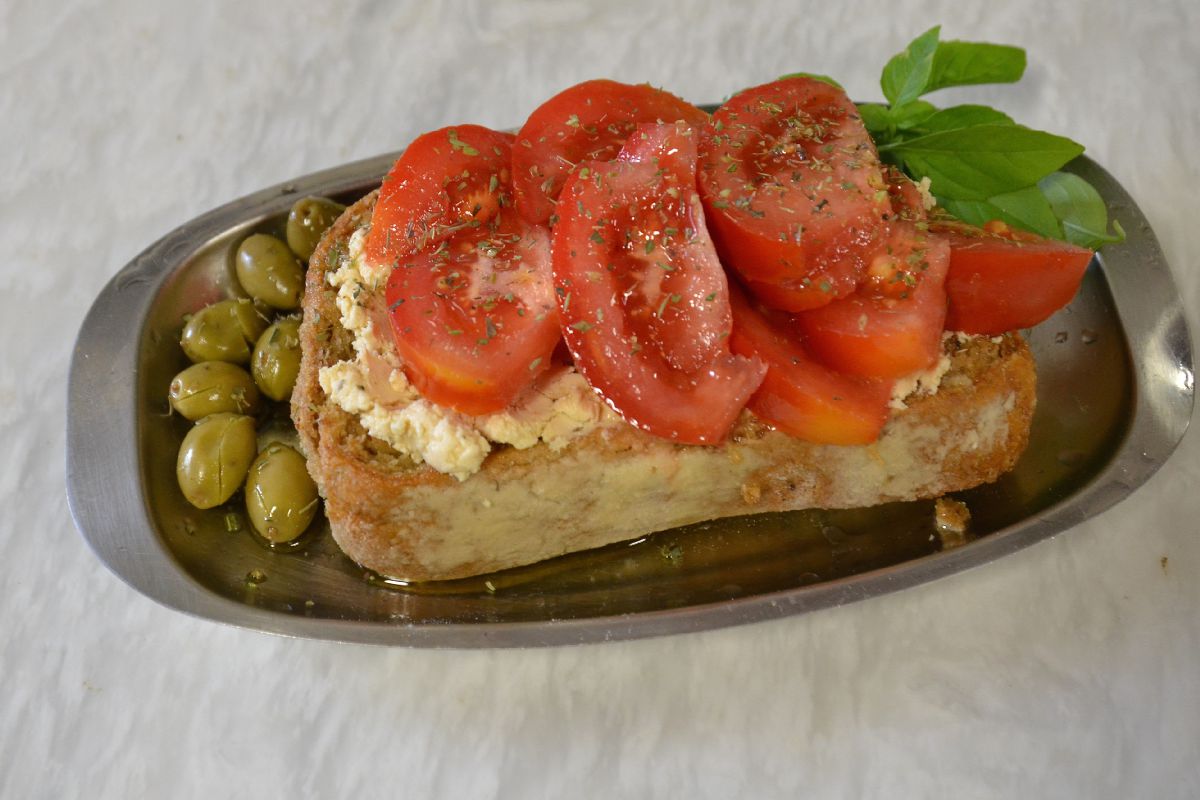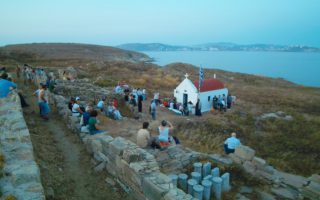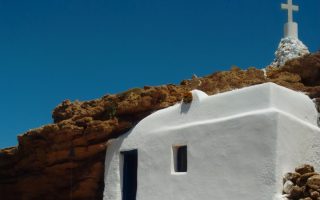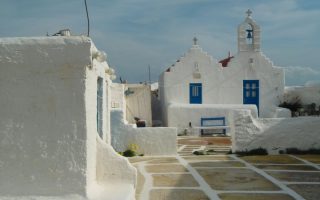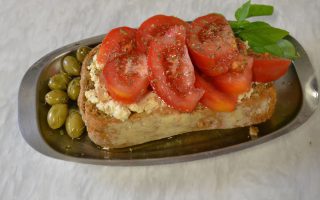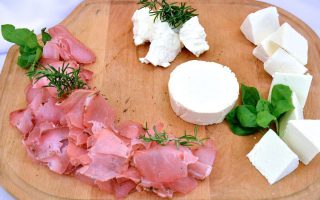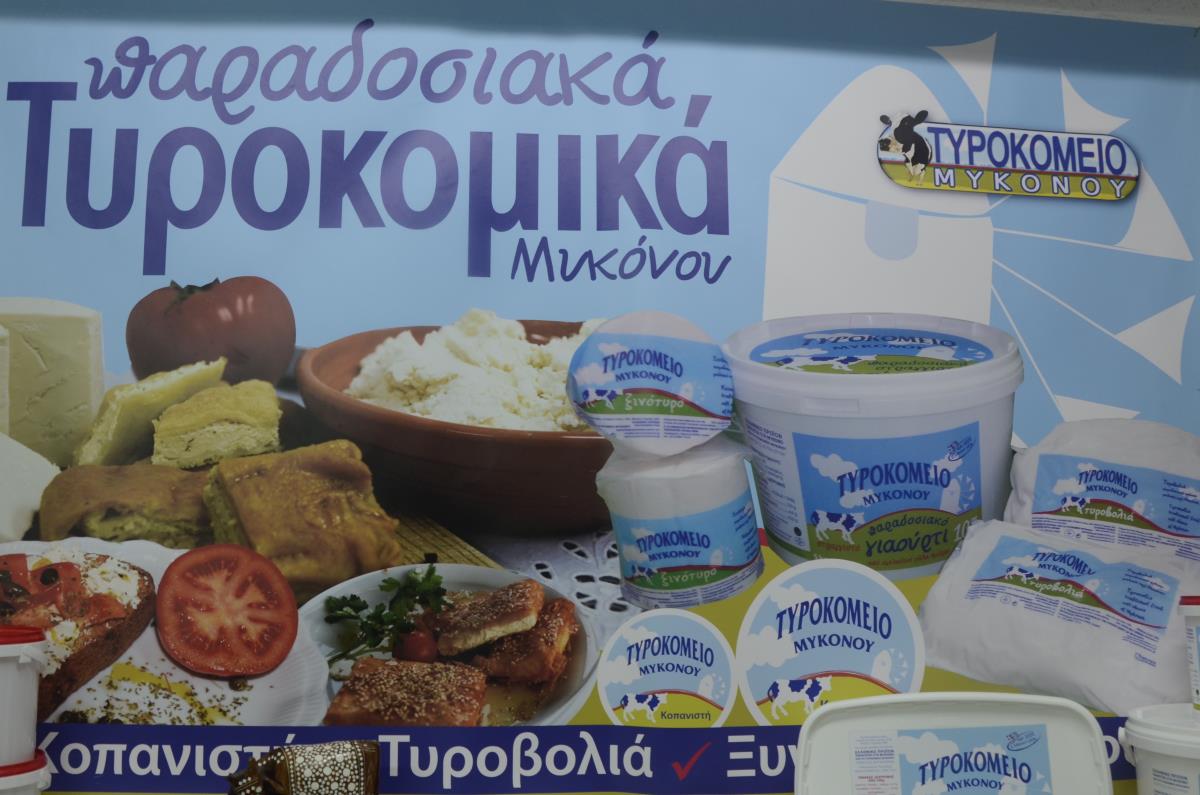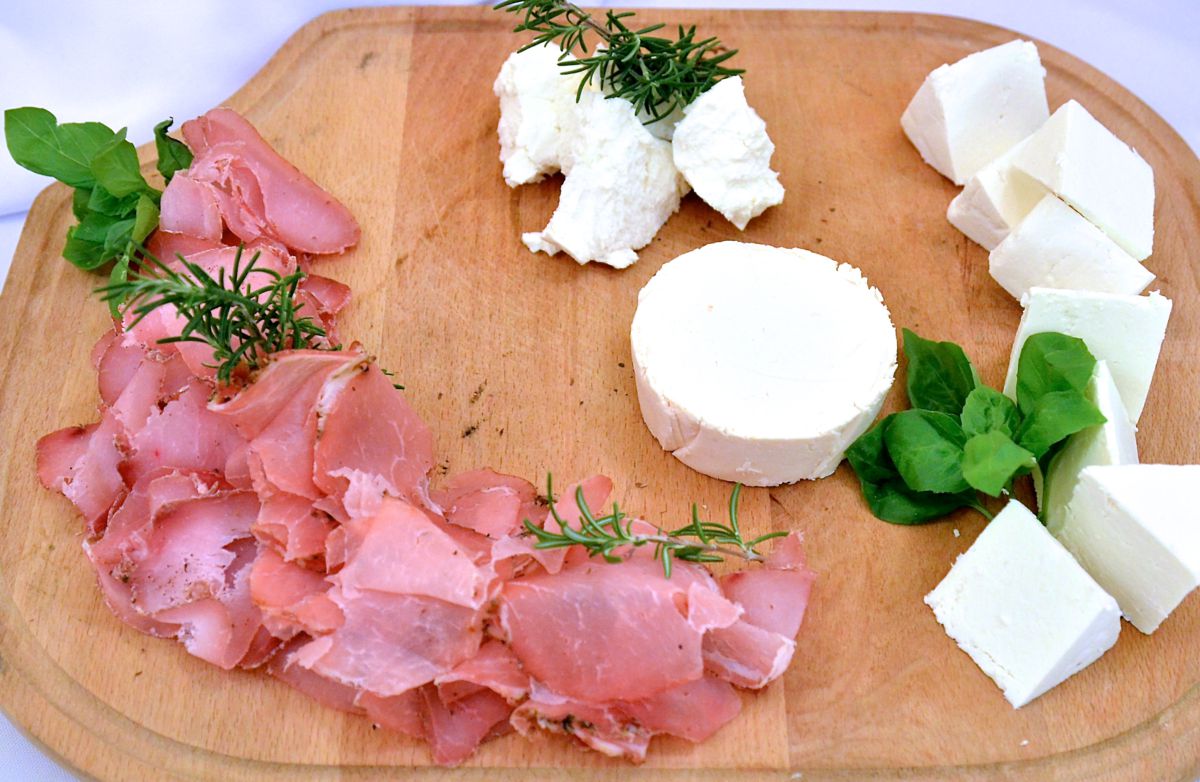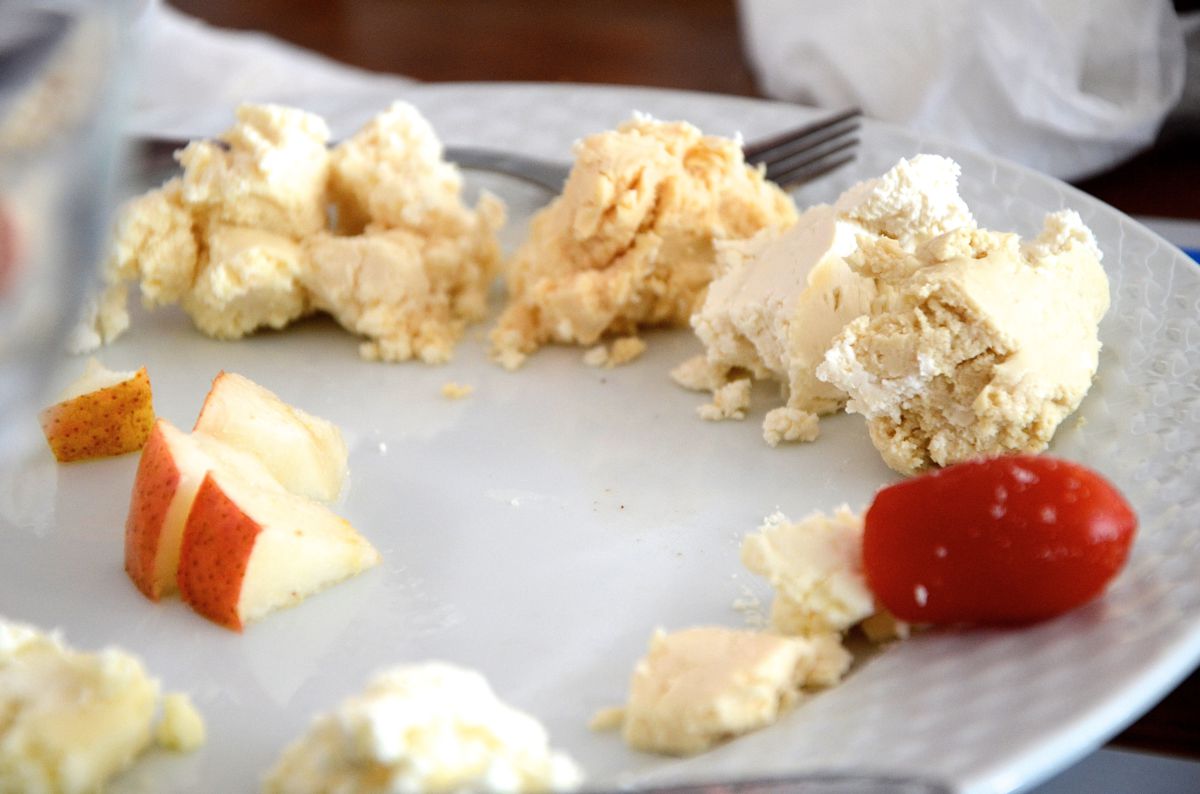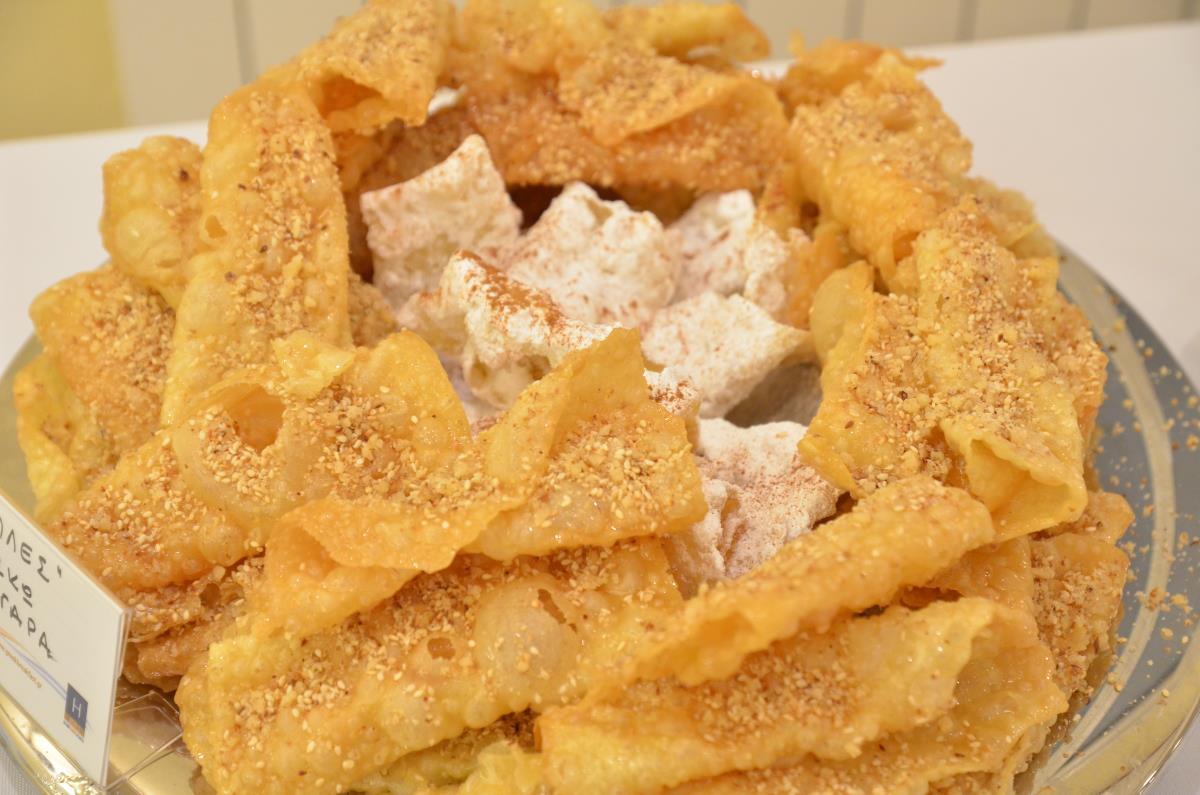Professionals in the field of gastronomy in its broadest sense – the agricultural sector, processing, hospitality, restaurants – have joined forces and created a society called the Gastronomic Community of Kalamata. Their goal is to enlist the best food-related businesses in the region, to set up a parallel structured link between Tourism and the Gastronomic Culture of Messinia, and to promote Kalamata as a centre for food and wine lovers, as a member of the programme “Gastronomy and Wine Tourism in Greece”
Source: /www.greekgastronomyguide.gr
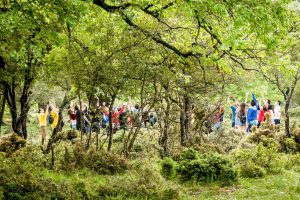 The Natural History Museum of Meteora and Mushroom Museum, during its effort to create alternative touristic activities, that showcase our nature’s wealth, is organizing and hosting truffle hunting activities in cooperation with travel offices.
The Natural History Museum of Meteora and Mushroom Museum, during its effort to create alternative touristic activities, that showcase our nature’s wealth, is organizing and hosting truffle hunting activities in cooperation with travel offices.
Special trained truffle dogs with their trainer are searching for this unique fruit of Greek nature. They offer an original experience that can be enjoyed by the visitors of the local area.
 In the same time, participants are provided with information about this special fruit. They learn about the kind of truffles that exist and how they can be used. In this way they enrich their knowledge about what is called “black diamond” that is “hiding” in the ground.
In the same time, participants are provided with information about this special fruit. They learn about the kind of truffles that exist and how they can be used. In this way they enrich their knowledge about what is called “black diamond” that is “hiding” in the ground.
The enjoyment doesn’t stop here! Participants have the opportunity to taste an exceptional truffle past dish in the forest!. This truffle pasta dish is cooked in an impressive cooking pan that can cover the feeding needs of 50 (!) people by a special chef.
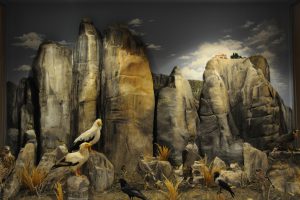 After the end of truffle hunting, the participants visit the Museum. They are guided around the natural history museum and the unique mushroom museum. After that, they can enjoy a mushroom product tasting with 5-6 kinds of mushrooms and traditional mushroom spoon sweet which are accompanied by a glass of local wine.
After the end of truffle hunting, the participants visit the Museum. They are guided around the natural history museum and the unique mushroom museum. After that, they can enjoy a mushroom product tasting with 5-6 kinds of mushrooms and traditional mushroom spoon sweet which are accompanied by a glass of local wine.
Undoubtedly, this is an experience that many wish to live. Now they have the opportunity. Enjoy!
The program of truffle hunting is:
10.00: Leaving from the Museum
10.30: The truffle hunting begins!
11.15: Truffle pasta dish cooking
12.15: End of the truffle hunting
12.45: Visit to the Museum, guided tour, mushroom product tasting
13.30: End of program.
For more information visit: www.meteoramuseum.gr www.trufflehunting.net, or email us at:
info@meteoramuseum.gr info@trufflehunting.net or call us: 00302432024959.
Source: www.meteoramuseum.gr
Rethymno is celebrating the award of European Wine City 2018!
Great news for wine-lovers! Rethymno is celebrating the award of European Wine City 2018 by RECEVIN European Network, opening thus a new page for wine experience and wine-tourism.
Wine has always been a very important part of the daily life and the culture of Cretan people. It is the signature and seal of friendship in social gatherings and an indispensable element in the famous Cretan diet. It is also a symbol of composition, continuity, coexistence and harmony in our relation with the earth, the natural environment and other people.
The fertile soil, the sun and many years of experience, have made Cretans know how to produce wine artfully. The local producers, based on the high quality of the indigenous varieties, such as the white-Rethymnian Vidiano and the red Liatiko, among 11 other original Cretan varieties, and by combining the tradition with the modern know-how, continue to produce an excellent raw material.
This year’s Cretan Diet Festival (1-7 July 2018), was oriented towards wine and its important role in gastronomy: wine-tastings, wine-pairings with the famous Cretan cheese and other Cretan products, seminars and wine classes, recipes based on wine, finger food pairing, back to back tastings, special restaurant menus, and many other special events have been planned, in order to make locals and visitors have an exquisite wine experience, full of music and fun!
Apart from the Cretan Diet Festival, many cultural and culinary actions are planned, both for professionals and the public, throughout the year: you can follow a wine-route, visit a winemaker, taste special cocktails based on wine and served in the best bars of the city, attend art events and exhibitions inspired by wine’s journey throughout the centuries and explore the enchanting process of wine-making through seminars, workshops and conferences.
Certainly Rethymno is not only a vacation place to come and visit but a safe destination full of cultural and nature experiences, with its clean sea and its unspoiled environment. The beautiful landscape, the vibrant small villages, the hospitality and the numerous options for filling the agenda of your visit, make the city the ideal all-season destination.
And this year, Rethymno will be the meeting point for both, foodies and wine-lovers! Don’t miss the chance to be part of the celebration!
For more information:
facebook: Rethymno European Wine City
instagram: @rethymnowinecity
YouTube: Rethymno Wine City
Cretan Dairy Products
Crete leads the word in cheese consumption. Cretans love cheese rather than milk. Many dishes of the traditional Cretan cuisine are based on local dairy products; however, in Crete cheese is eaten alone throughout the day either as accompaniment or as appetizer, main meze or desert, while the Cretan graviera topped with honey is everyone’s favourite breakfast or supper.
Traditional farming methods rely on centuries-long experience. The only basic difference from the past is that nowadays milk processing is not carried out at the sheep hut next door but in modern facilities.
The most significant products of the Cretan land are olives and olive oil, grapes, citrus and fruits in general, wine and tsikoudia – the Cretan fire water-, dairy products, apaki (pork coated in aromatic herbs, marinated for 2-3 days in vinegar and wine before it is slowly smoked over a fire of olive and cypress branches), vinegar-tinged sausages, bread and rusks, thyme honey, stamnagathi (a wild green with a bitter and sweet flavour and an exquisite aftertaste), wild greens and vegetables, sultanas, locust beans, herbs and aromatic plants.
Μore at Greek Gastronomy Guide…

Source: www.greekgastronomyguide.gr
World-renowned for its ancient civilization and its unique natural beauty, Crete is Greece’s top tourism destination attracting more than two million visitors in the space of a year.
Nevertheless, Crete boasts a significant productive population involved in the primary sector, chiefly in the production of oil, in the cultivation of vineyards and wine-making, in bio-dynamic agriculture (early vegetable production), in cattle breeding and in cheese making.
The most significant products of the Cretan land are olives and olive oil, grapes, citrus and fruits in general, wine and tsikoudia – the Cretan fire water-, dairy products, apaki (pork coated in aromatic herbs, marinated for 2-3 days in vinegar and wine before it is slowly smoked over a fire of olive and cypress branches), vinegar-tinged sausages, bread and rusks, thyme honey, stamnagathi (a wild green with a bitter and sweet flavour and an exquisite aftertaste), wild greens and vegetables, sultanas, locust beans, herbs and aromatic plants.
Μore at Greek Gastronomy Guide…
Source: www.greekgastronomyguide.gr
Mostra
Made of two of its most characteristic products, kopanisti and rusks, Mostra is one of the island’s best known mezedes.
While spicy kopanisti was relished only by the locals and a few connoisseurs until recently, the Mykonos Dairy Factory (Tyrokomeio Mykonou) using modern packaging and marketing has succeeded in placing this exotic product in most city supermarkets. Rusks, though popular throughout Greece, remain humble. And yet for centuries ‘twice baked’ breads sustained not only the islanders but also the crews of the merchant fleets sailing the Aegean, who found Mykonos to be the best suppliers of naval biscuit. Using two things they had in abundance, wind and brushwood, they turned wheat into flour with their windmills and then turned the flour into twice baked bread (rusks) in their outdoor ovens. (Unlike fresh bread, rusks never go mouldy.)

Mykonos rafiolia
Rafiolia are a common confection in the Cyclades. The Mykonos variation was perfected by the talented local chef Eirini Zouganeli, who kindly provided us with the recipe for the TV presentation of the Greek Breakfast of Mykonos, when rafiolia were chosen as one of the island’s most representative sweets.
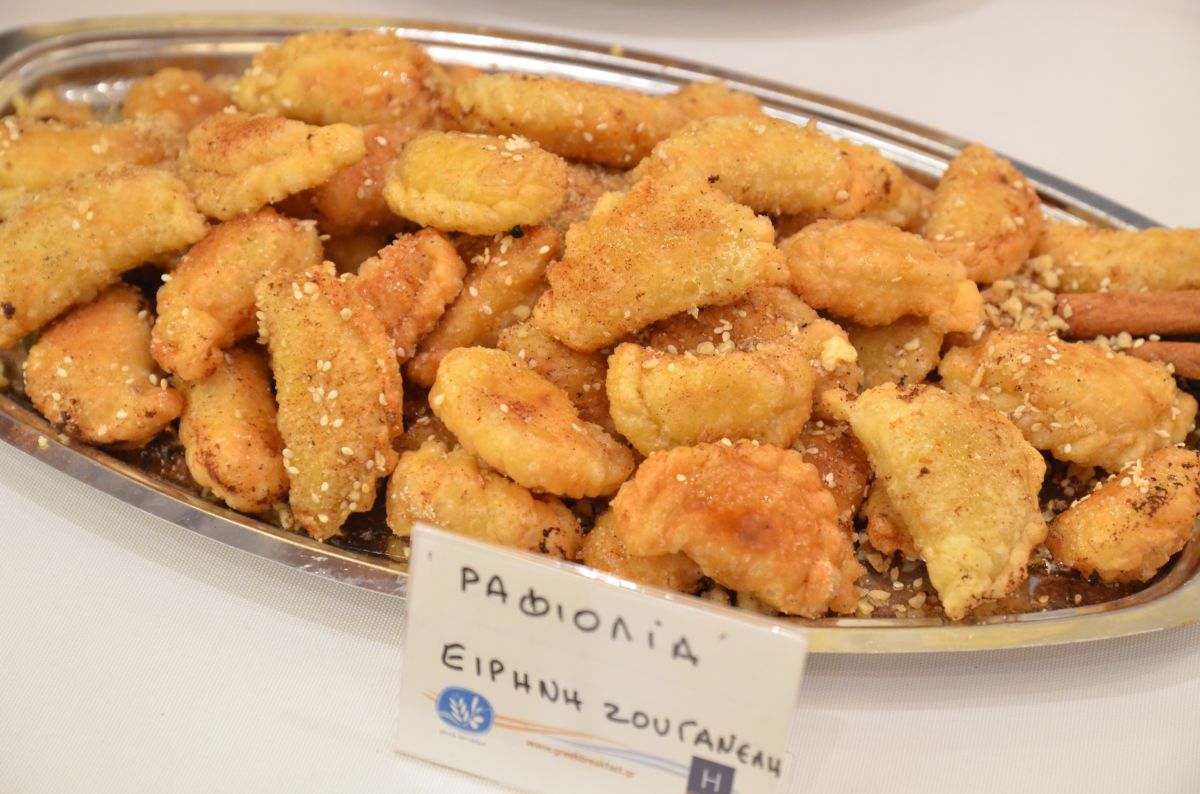
Μore at Greek Gastronomy Guide…
Source: www.greekgastronomyguide.gr
Kopanisti is made the traditional way by dozens of farmers, who often sell it to individuals or to little grocery stores. However, the island’s only authorized kopanisti cheese maker is the Koukas family who have opened an ultramodern plant at Palaiokastro in Ano Mera, where they use the milk from their herd of cows which is the largest (130 animals) in the Cyclades. Up to 2014 a significant amount of their velvety milk went to Tinos to produce Tinos graviera, but since then the family has reduced their orders since demand for kopanisti has risen so much.
When you visit the Koukas “Mykonos Dairy Factory” at Palaiokastro, you’ll meet the soul of the place, Thodoris, a young man born and brought up on Mykonos. He’s a modest fellow with a cheese-making diploma from the well known school in Ioannina and his parents, Markos and Irini Koukas, are the pillars of the enterprise. In their new accredited cheese plant – where PDO Mykonos kopanisti is produced among other cheeses – you will get an idea of how the ‘new’ enters the modern era while rooted firmly in tradition.
Μore at Greek Gastronomy Guide…

Source: www.greekgastronomyguide.gr
One of the most interesting of the many Greek preserved meat products is the highly aromatic louza of Mykonos and its variations in the Cyclades.
On Mykonos, louza is seasoned solely with allspice and savoury, which makes its taste more robust. On Tinos they use black pepper and an abundance of fennel seeds, while on Syros they make a blend of wine, black pepper, allspice, cinnamon and cloves.
Traditionally, the preparation of louza on Mykonos took place at the end of an elaborate ritual, the annual pig slaughter, a beloved festival on the island. Every rural family had a pig and every autumn they would slaughter the animal which they had been feeding all year. At that time experienced butchers would take out the fillets and rub them with a mixture of coarse sea salt and fine salt. After rinsing, they would dry them and season them with lots of savoury and pepper.
Μore at Greek Gastronomy Guide…
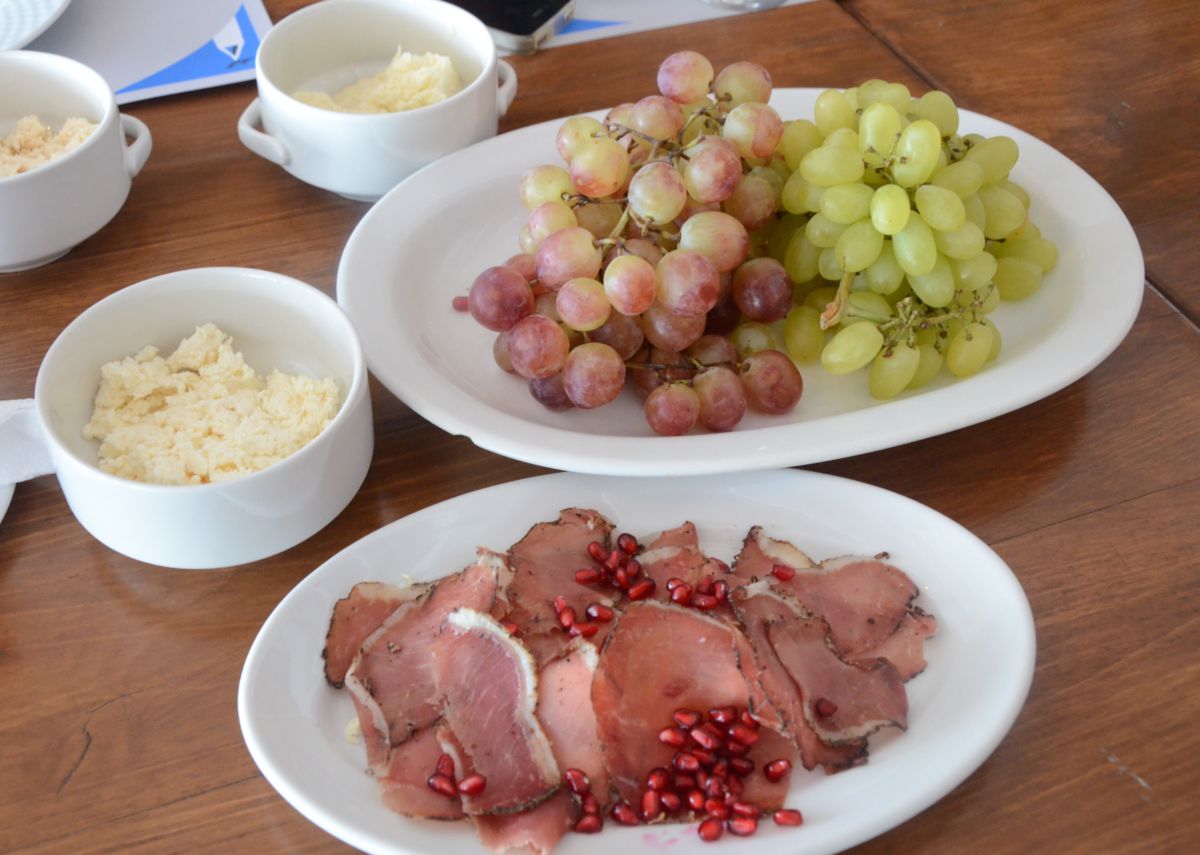
Source: www.greekgastronomyguide.gr
Kopanisti, Mykonos‘ trademark spicy, peppery fermented cheese, has become one of Mykonos’s best known mezedes.
This soft cheese, stored in brine, with its strong taste and creamy texture, which ranges in colour from white to pale beige, is also made on the neighbouring islands of Syros and Tinos from cow’s, ewe’s or goat’s milk or a mixture and has been awarded PDO status as a typical product of the Cyclades.
Kopanisti is produced in the following way: Initially the milk is stirred well with pectin and warmed in a large cauldron. After 24 hours of rest it turns into thick buttermilk, a substance similar to watery yogurt but with a more sour taste. In the next phase the buttermilk is strained for 24 hours in cheesecloth. The resulting soft cheese (tyrobolia) is used in salads, pie and sweets and its flavour and shape are similar to fresh myzithra (a cheese comparable to ricotta). When this ball is salted and kneaded, over and over, with the addition of a little kopanisti from a previous batch, it becomes a new batch of kopanisti (a word that comes from the verb to pound).
Μore at Greek Gastronomy Guide…
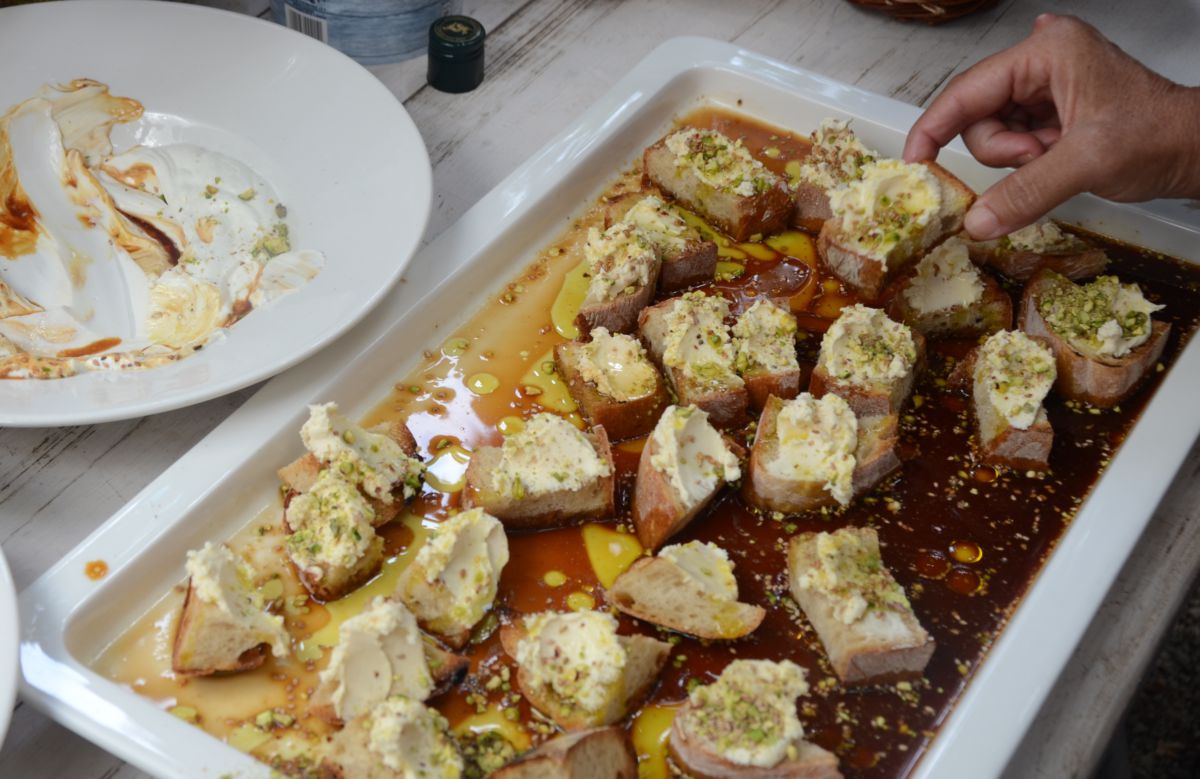
Source: www.greekgastronomyguide.gr
“Whoever finds the time to stay a few days on the island will taste other joys and other treats and other delicacies. Delicious pork, unique sausages and synglina and louzes, wonderful cheese, kopanisti, and the barley rusk, along with some good wine, in the company of the locals who know and eating and dining well and how to have a good time, buying each other drinks and singing, perhaps because since ancient times the god most worshipped on Mykonos was Dionysos. And today you find him everywhere, in the town, in the port, in the countryside.”
This was how the noted architect Aris Konstantinidis described the island’s gastronomic wealth, after dedicating his time to a poetic appreciation of its architecture. And even if some fifty years have passed since then and tourism and rampant construction have taken over much of the island, the Mykonians continue to be hospital, warm and extremely tolerant of their numerous visitors, while observing their own customs, enjoying themselves and eating the way they always have.
Thus, apart from the gastronomic ambassadors of the island, which are the mild fresh cheese tyrovolia, the peppery kopanisti and the so-called sour cheese (xinotyri), the sweet-scented louza, noumboulo (smoked pork fillet) and mouth-watering sausages, the typical Mykonos mezes, the famous mostra (made with barley rusks, sun-dried tomatoes and kopanisti), there are many more typical dishes that represent the island.
Μore at Greek Gastronomy Guide…
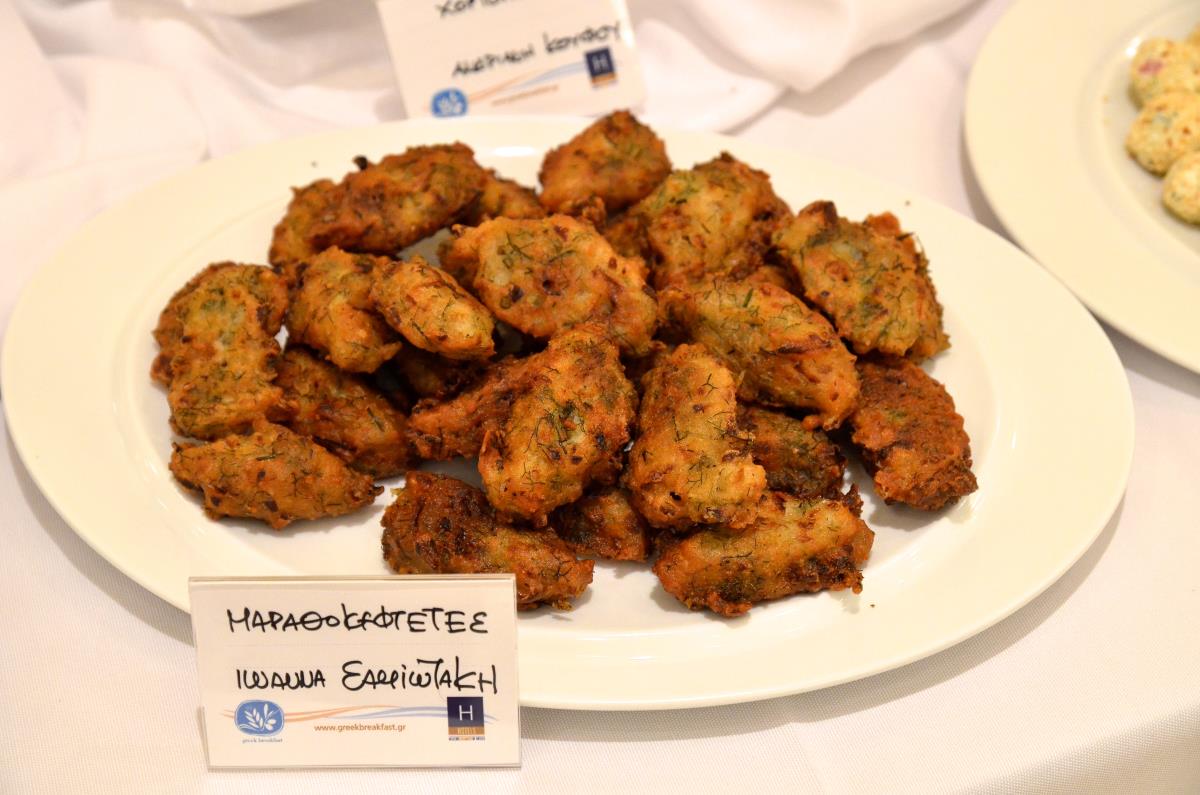
Source: www.greekgastronomyguide.gr

